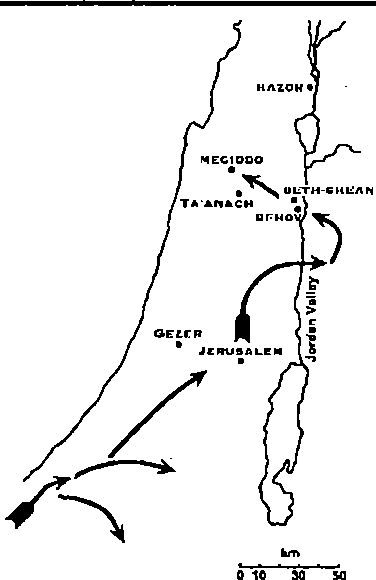Solomon’s Splendor Affirmed
“Thy wisdom and prosperity exceedeth the fame which I heard” (Queen of Sheba to King Solomon, 1 Kings 10:7).
Archaeologist William Dever of the University of Arizona in Tucson adeptly observes that, “In the current Israeli-Palestinian conflict, people are increasingly invoking archaeology in support of their cause.” 1 In this regard, Solomon’s wisdom and riches recently have been called into question and become part of this argument. In the mid-1990s, a handful of “revisionist” scholars, archaeologists such as Israel Finkelstein of Tel Aviv University,2 rocked the establishment with an audacious alternative that claimed biblical accounts of Solomonic splendor were mostly “hype.” In contrast, the Bible reports Solomon’s prosperity as legendary even far from Israel in Sheba. While we respect the obligation of the scholarly community to evaluate archaeological evidence so that the clearest light possible is shed upon the scriptural record, it is gratifying to learn that recent excavations in Israel negate these revisionist claims.
Hendrik Bruins of Ben-Gurion University and Johannes van der Plicht, University of Gronigen who determined dating, worked in cooperation with archaeologist Amihai Mazar of the Hebrew University of Jerusalem to reaffirm the Bible account of Solomon’s splendor.3 The new dates from Tel Rehov, a major Iron Age site in northern Israel, favor the Biblical view that King Solomon was both real and powerful. “The implications are enormous for recreating the history of ancient Israel,” says archaeologist Lawrence Stager of Harvard University. Researchers led by Amihai Mazar of the Hebrew University of Jerusalem based their conclusions on olive pits and charred grain from one of Tel Rehov’s three “destruction layers” – strata marking times when Rehov was ravaged before being rebuilt. The results which are reported in the same journal place the layer between 940 and 900 BC. Mazar and colleagues say the dates place the devastation at the time of a whirlwind plundering tour of Palestine by the Egyptian Pharaoh Shoshenq.4
The Bible adds another key detail: According to the books of 1 Kings and 2 Chronicles, the pharaoh (whom the Israelites called Shishak) launched his invasion five years after Solomon’s death. If Mazar and colleagues are right, the destruction layer at Rehov – along with contemporary layers that archaeologists have identified at other sites – gives a definitive glimpse of Solomon’s realm. That information may make clear which of two radically different versions of Solomon fits the facts. The mainstream view, Stager says, holds that the great leader Solomon transformed the “rather rustic” early 10th century BC Israel of his father David into a sophisticated kingdom, with architecture and a material culture to match.

Campaign of Pharaoh Shishak, five years after Solomon.
The proposed alternative “Low Chronology” supported by Finkelstein disputes the claims to Solomon’s glory, and places his reign nearly a century later in the 800’s BC. Now this “Low Chronology” fails under the scrutiny of this latest investigation. Rehov with its fields of grain and olives was a well-planned IO-hectare urban center whose material culture connects it with sites of Solomonic ruins. The carbon-14 date. Dever says, strongly bolsters the case for, “a historical Solomon and a real ‘United Monarchy’ in the 10th century.” Harvard University’s Stager claims that Mazar’s study, “puts the nail in the coffin” of Finkelstein’s theory.
– Richard Doctor
(1) Holden, C., “ARCHAEOLOGY: Dates Boost Conventional Wisdom About Solomon’s Splendor,” Science (Vol. 300, Issue 5617) 11 April 2003, pp. 229-231.
(2) Balter, M., “CHRONOLOGY: The Two Tels: Armageddon For Biblical Archaeology?,” Science (Vol. 287, Issue 5450) 7 January 2000, p. 31.
(3) Bruins, H., J. van der Plicht, and A. Mazar, “14 C Dates from Tel Rehov: Iron Age Chronology, Pharaohs, and Hebrew Kings,” Science (Vol. 300, Issue 5617) 11 April 2003, p. 315.
(4) Within the scholarly community this military campaign is believed to be a well-documented historical event that both Egyptian records and biblical writings date at about 925 BC.
